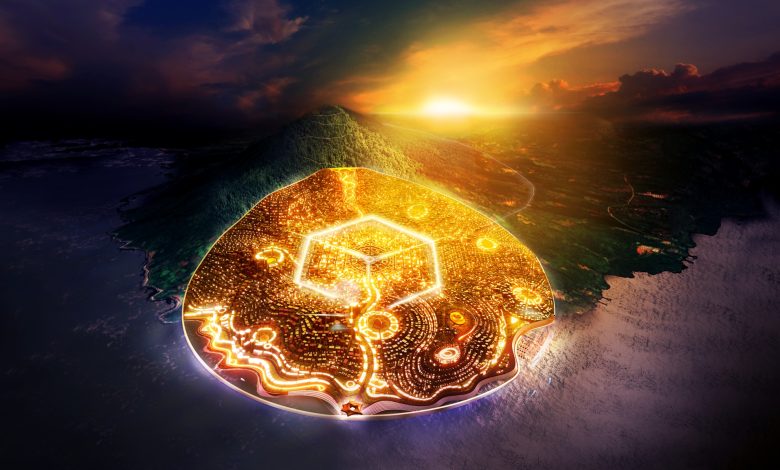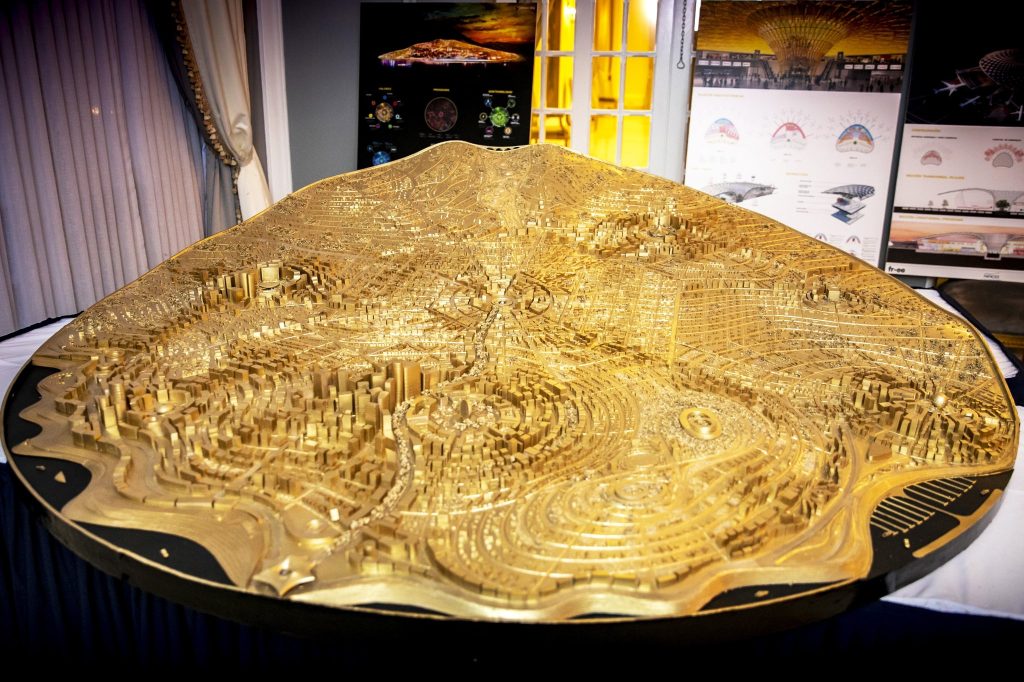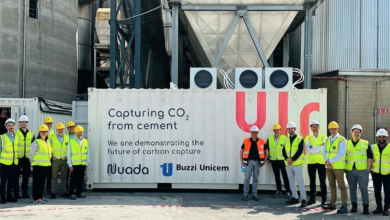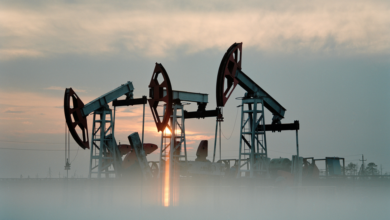Bitcoin City, President of El Salvador unveils the design of the first city funded by cryptocurrency

El Salvador is the first country to have made cryptocurrency one of the national currencies
(Sustainabilityenvironment.com) – The President of El Salvador, Naiyb Bukele presented to the world the unusual Bitcoin City, the first city fully funded by cryptocurrency.
The idea of the project started in November last year, as an integral part of the bitcoin race of President Bukele, who made these cryptocurrencies one of the official coins of El Salvador.
The project is realized by the architect Fernando Romero of the studio Fr.ee, who imagined a circular city built on the slopes of the volcano Conchagua on the southern coast of the country.
It will be the geothermal energy of the volcano to power the city completely, also covering the extra energy expenditure required by the creation of the digital currency.
Given the golden model presented to the press, Bukele stressed that the city will obviously not be built with this metal. Bitcoin City “will be predominantly green and blue“, complete with a panoramic terrace on the top of the mountain.
How to finance Bitcoin City

To finance the city, the President of El Salvador will issue 10 bonds worth 1 billion each. Half of the funds will be used to buy cryptocurrencies, while the other $500 million will go toward energy and bitcoin mining infrastructure. But what is cryptocurrency? Cryptocurrencies is a digital or virtual currency that is protected by encryption, often with blockchain technology, making it almost impossible to counterfeit spending. To finance the infrastructure and public services of the city will then be exploited the proceeds of mining or the process that through complex mathematical algorithms evaluates transactions and obtains in exchange a brand new bitcoin. Mining is the energy-intensive process of creating new bitcoin by solving cryptographic puzzles.
It seems that the particular city was conceived from the perspective of attracting those who have already put aside wealth in bitcoin. For other, the new smart city of Bukele will be completely tax-free apart from a 10% VAT on the purchase of goods and services.
For now, the technical details are still few even if from the master plan you have a very precise idea of what will be the planning Bitcoin City.
“It will be a city of full citizen freedom with effective exercise of human, civil and political rights. It will promote the installation of technological companies, the intensive use of bicycles, without polluting transportation, with a thematic museum on the world history of money, a cultural center, a convention center, a promenade, hotels, a marina, a nearby airport and an outer metropolitan area, where the current population will have decent housing and efficient urban services, health, education, job and recreational opportunities”, comments architect Fernando Romero.





